Mersina Halvagis: Serial killer Peter Dupas has inflicted misery on many
PETER Dupas brutally murdered Mersina Halvagis at a cemetery 17 years ago, but she was not the only victim of one of Australia’s most depraved. So what motivated him?

True Crime Scene
Don't miss out on the headlines from True Crime Scene. Followed categories will be added to My News.
PETER Norris Dupas murdered Mersina Halvagis at Fawkner Cemetery 17 years ago. Experts still don’t know exactly what motivated his sex-driven crimes.
MERSINA Halvagis never thought she would be murdered in a cemetery. No innocent decent person would.
Instead, in the words of a Supreme Court judge, Ms Halvagis believed Fawkner Cemetery to be a “place of peace and reflection” and was there “to do honour to her grandmother” the day she was stabbed to death.
It was 17 years ago tomorrow when Ms Halvagis, 25, went to the cemetery by herself to visit her grandma’s grave.
Unfortunately, serial killer Peter Norris Dupas — one of Australia’s most depraved misogynists — was also at the cemetery that day.
Tomorrow, Ms Halvagis’s family will gather at her grave to mourn her passing.
Her dad George and mum Christina are practically daily visitors there.
“It’s getting harder as time passes,” George Halvagis told the Herald Sun this week.
“We’re still going through hell.”
About 3.45pm on November 1, 1997, Ms Halvagis bought flowers and a bottle of Sprite at the cemetery tearooms and drove her fiance’s car to the northern section of the grounds, near the Greek Orthodox section.
She walked along Row M to her grandmother’s grave — plot M33 — and placed down the flowers and the lemonade.
Ms Halvagis may have been talking to her grandmother, or saying a silent prayer.
She did not see Dupas coming.
A plump bespectacled hobgoblin of a man, Dupas took his opportunity and struck — from behind.
Ms Halvagis proved the perfect victim for the cowardly killer: she was a lone female target weighing only 45kgs and standing a mere 155cms tall.

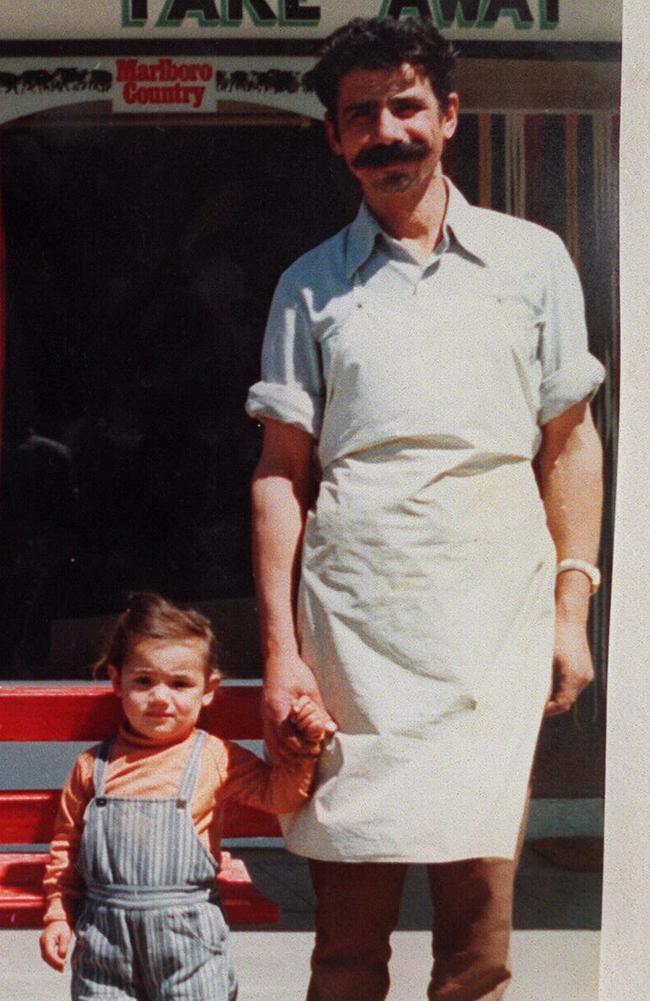
In the words of Supreme Court judge Justice Philip Cummins (who sentenced Dupas after his first trial): “(Ms Halvagis’s) last actions were typical of her: a fine young woman, in a place of peace and beauty, thinking not of herself but of others — devoted, considerate and good.”
Of Dupas, Justice Cummins said: “Just as Ms Halvagis’s presence at the cemetery was typical of her goodness, your presence at the cemetery was typical of your evil: cunning, predatory and homicidal.”
The knife attack was described as “swift, savage and brutal, but directional”.
Ms Halvagis tried to escape, her hands up in defence.
But, as Justice Cummins said, she had no chance against Dupas’s strength, his knife and his hatred.
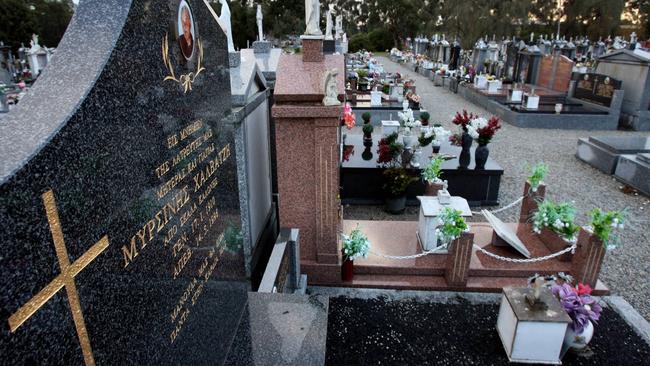
Dupas, who had approached another woman and been seen by others at the cemetery that day, stabbed Ms Halvagis in the neck, chest and abdomen.
He inflicted over 50 wounds during the frenzied attack.
In the words of Supreme Court judge Justice Elizabeth Hollingworth (who sentenced Dupas at retrial): “It must have been an absolutely terrifying ordeal for her ... Tragically, it seems that Ms Halvagis was simply in the wrong place at the wrong time.”
Ms Halvagis’s fiance, Angelo Georgievski, began to worry when Ms Halvagis did not come home or make contact that night.
In the early hours of the morning, he and his dad went to the cemetery.
His car — the one Ms Halvagis had borrowed that day — was locked in the car park.
Police arrived and Mr Georgievski found his girlfriend’s body slumped between two graves.

PETER Dupas was born in Sydney on July 6, 1953; the youngest of three children.
While still an infant his family moved to Melbourne.
He attended Frankston Primary School and then went to Waverley High School, where kids nicknamed him Pugsley — no doubt after the plump kid from the Addams Family TV show — and teased him about his weight.
That cruel treatment did not explain his confused inner loathing of women.
He was spoiled as a child and would later tell a psychiatrist his mother was over-protective and his father a perfectionist who made him feel inadequate.
Apart from his own, there is no other criminal behaviour in his family.
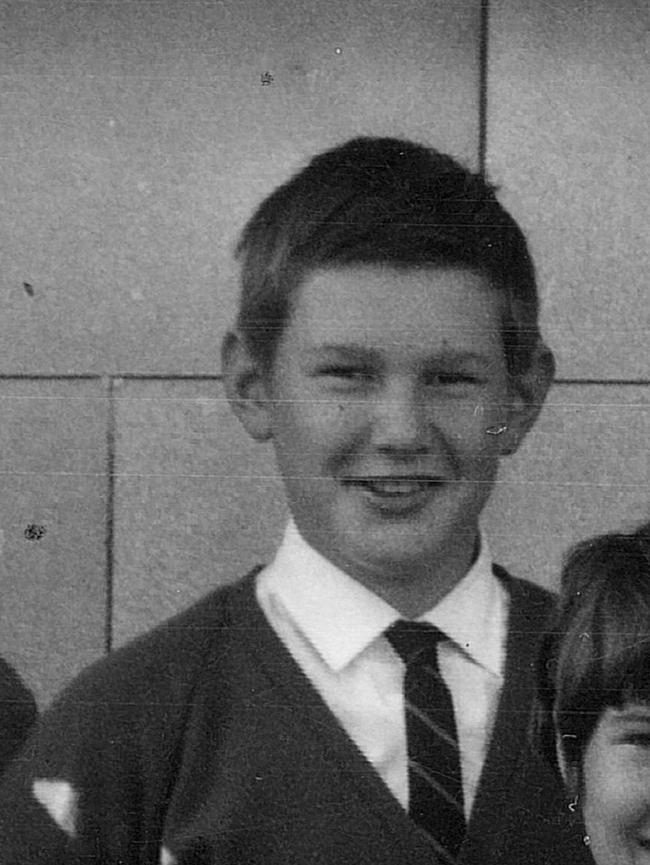
He has been unable or unwilling to provide any rational or honest explanation for his regular outbursts of violent and vicious behaviour since his first known attack as a teenager.
That was when he stabbed a woman neighbour without warning.
Dupas was in Year 7 when the first of many experts tried to get inside his head at Larundel Psychiatric Hospital.
The assessment was that Dupas was a teenage loner “caught in an emotional conflict between the need to conform to the expectations of his parents and the unconscious urges to express his aggression and his developing masculinity’’.
He completed Year 11, then left school to start work as an apprentice fitter and turner.
He did not stick with that trade.
Dupas had other things on his twisted mind.
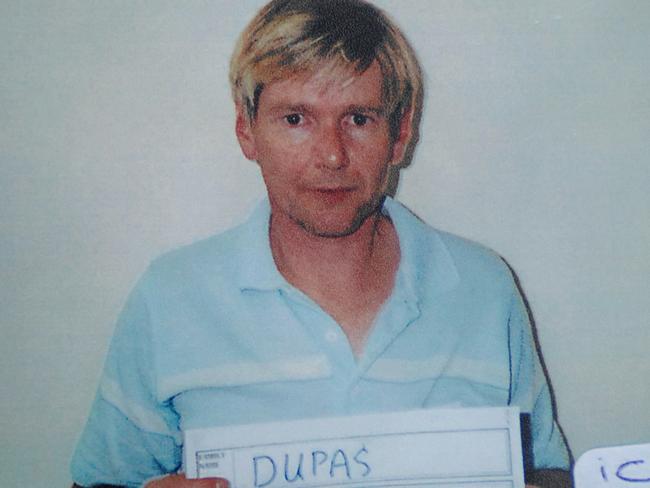
After some disturbing “peeping Tom” style behaviour after turning 18, Dupas was arrested and charged for the first time with rape — of a woman in her Mitcham home.
He was remanded to the Mont Park Psychiatric Hospital for assessment and treatment, but was allowed to come and go on leave.
While on leave, he was arrested in a police stake-out on a Rosebud amenities block after complaints of a deviant watching girls showering.
This time he was returned to Larundel and admitted as a voluntary patient for six weeks.
Psychiatrists were unable to find any gross psychiatric disorder.
“However,’’ they concluded in what was to prove a masterpiece of understatement, “we do not feel that we have excluded the possibility of personality problems for him’’.
After being fined for loitering with intent and offensive behaviour in Rosebud, Dupas was convicted of the Mitcham rape and jailed for the first time.

County Court Judge John Leckie described it as one of the worst types of rape — on a young married woman in her home — and sentenced the 21 year old to nine years’ jail, with a minimum of five.
Within two months of his release in 1979, Dupas raped a woman at knifepoint in a Frankston public toilet.
During 10 days, before being caught, he also stabbed an elderly woman in the chest, chased and threatened another woman with a knife and tried to grab a third.
Despite Dupas’s history of offending, Judge Leo Lazarus sentenced him to only 6 1/2 years’ jail — again with a five-year minimum.
Four days after his release, Dupas raped a 21-year-old woman sunbaking at Blairgowrie back beach on March 3, 1985.
The rape occurred 4km from where a woman had been murdered in sand dunes at Rye back beach 16 days earlier.
Dupas was serving the last few weeks of the Frankston rape sentence at the time, but it has since emerged he was on temporary leave when sunbather Helen McMahon was murdered.
He was arrested near the scene of the Blairgowrie rape after misplacing his car.
Sentencing Dupas for the second time, Judge Leckie said Judge Lazarus’s earlier attempt to rehabilitate Dupas had failed miserably.
He sentenced Dupas to 12 years’ jail with a ten-year minimum.
Drugs designed to reduce sex drive were administered without much success.
While serving his ten-year minimum, Dupas married a nurse, 16 years his senior, in Pentridge Prison’s psychiatric division.
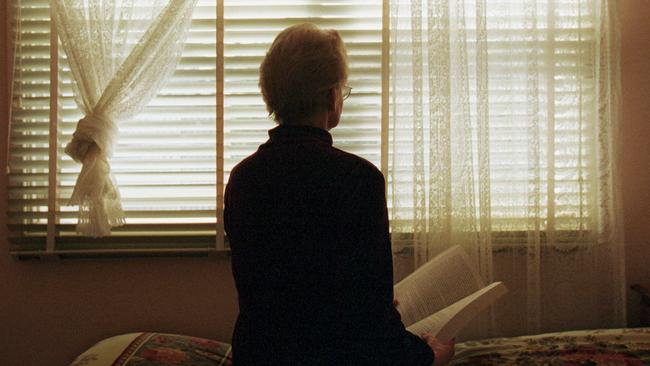
For the first time, Dupas claimed to understand his problems.
But less than two years after his release, on January 3, 1994, he was caught fleeing after cutting a young woman’s hands as she fought to prevent him raping her in a toilet cubicle at Lake Eppalock.
When police searched his station wagon they found knives, handcuffs, a balaclava, condoms, a roll of sticking plaster, insulation tape, a shovel and a sheet of plastic.
Despite the degree of planning involved, prosecutors could not sustain a charge of attempted rape — so charges against Dupas were reduced to false imprisonment.
He was sentenced to three years and nine months’ jail, with a minimum of two years and nine months, and was released on September 29, 1996.
By then his marriage had ended.
His wife, who believed Dupas was “non-sexual’’ and timid around women, now knew him for what lurked within — a manipulative and predatory monster.
“He was two people living inside one shell,’’ the woman would later tell the Sunday Herald Sun.
“One was kind and gentle, the other was pure evil, but I never knew.’’
DUPAS has been convicted of murdering three women, but police suspect he is responsible for several unsolved murders.
In October 1997 he murdered prostitute Margaret Maher and employed his unique, chilling kill signature before dumping her near the Hume Highway at Somerton.
Ms Maher relied on street prostitution to pay for drugs, working the truck stops and service stations along the Hume Highway and hitchhiking to appointments.
She represented an opportunity for Dupas.
Ms Halvagis was Dupas’s second murder victim.
In April 1999 he butchered psychotherapist Nicole Patterson, 28, at her Northcote home,
mutilating her after death in similar fashion to what he did to Ms Maher.
His distinctive kill signature, the removal of the victims’ breasts, was described as a “depraved act of contempt”.

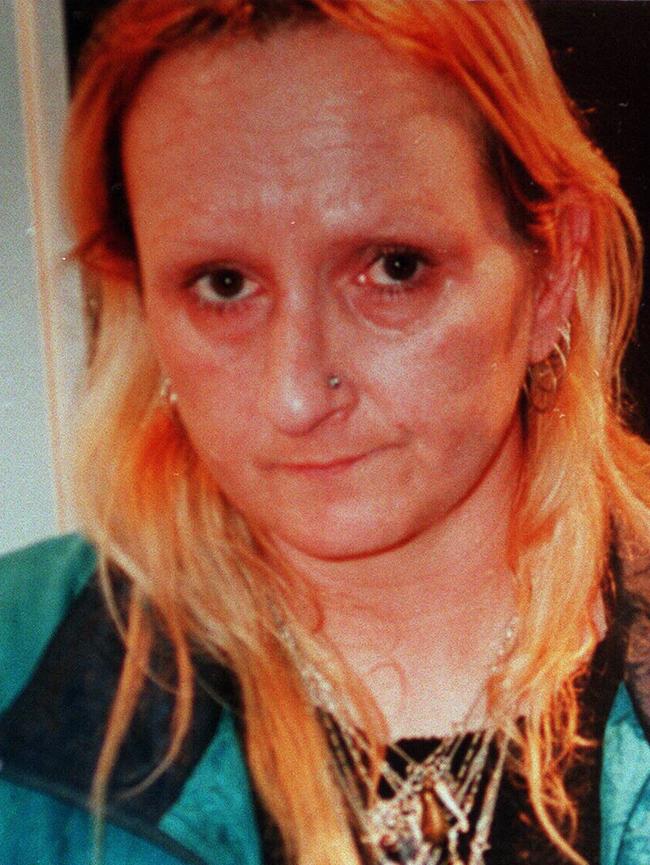

Dupas carefully planned the Patterson murder, having made an appointment to kill using an assumed name and pretending he had relationship problems.
He stabbed Ms Patterson 27 times and mutilated her in her psychotherapy consulting room.
He was first charged with the Patterson murder, and a jury found him guilty in August 2000.
“You regarded Nicole Patterson as nothing more than prey to be entrapped and killed,’’ Justice Frank Vincent said when sentencing him to life with no minimum term.
“At a fundamental level as human beings you present for us the awful, threatening and unanswerable question: ‘How did you come to be as you are?’’’
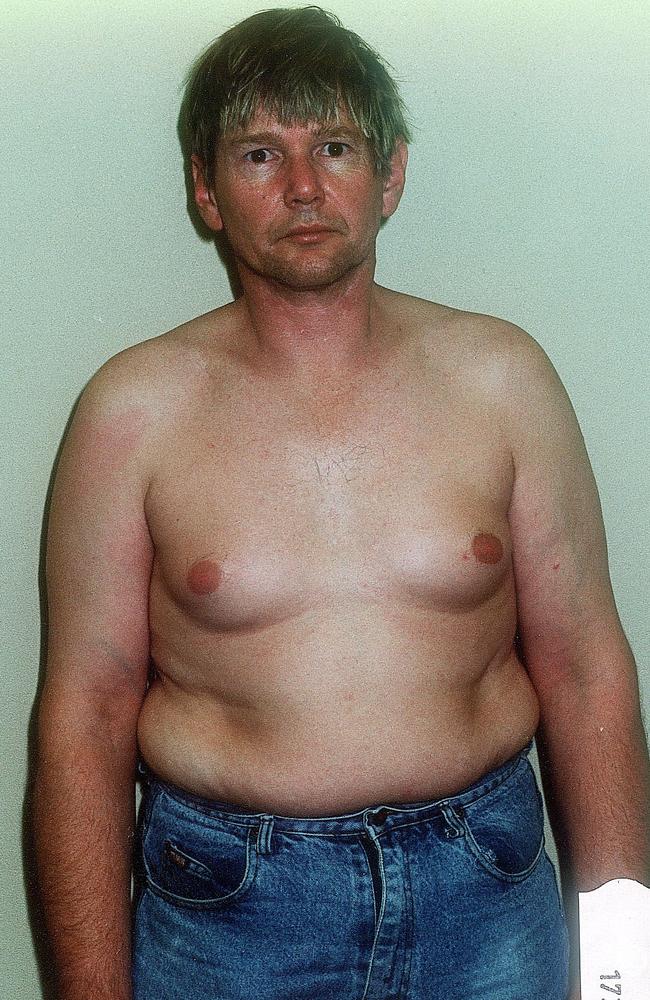


In August 2004, a jury found Dupas guilty of the Maher murder.
Justice Stephen Kaye sentenced him to his second life term with no chance of release, saying Dupas was motivated by “unmitigated evil”.
“You intentionally killed a harmless, defenceless woman who, like all your other victims, had no prospect of protecting herself against you,” Justice Kaye told the vile monster.
“You had, over almost three decades, terrorised women in this state.”
Publicity about the Patterson and Maher cases led witnesses to come forward about the Halvagis murder.
One crucial witness was disgraced former defence lawyer Andrew Fraser, who shared a cell with Dupas at Port Phillip Prison while serving a sentence for drug offences.
Dupas re-enacted elements of the Halvagis murder for Fraser and made certain damning confessions in jail.

A jury first found Dupas guilty of the Halvagis murder in August 2007.
He appealed, was granted a retrial and found guilty, again, in November 2010.
“You seem to be motivated by a deeply entrenched, perverted and sadistic hatred of women, and a complete contempt for them and their right to live,” Justice Hollingworth said when sentencing the 57-year-old to his third life term without parole.
The three families still grieve to this day.
George Halvagis became a face for victims of crime.
His campaign for justice has seen him put pressure on MPs, police and the media to keep the case in the public eye, get a $1 million reward offered and have the law changed so police can quiz inmates on other crimes.
“I’m going to make sure that every murderer gets what he deserves,’’ Mr Halvagis once said.
This week he told the Herald Sun: “I don’t want anyone else to go through what we’re going through.”
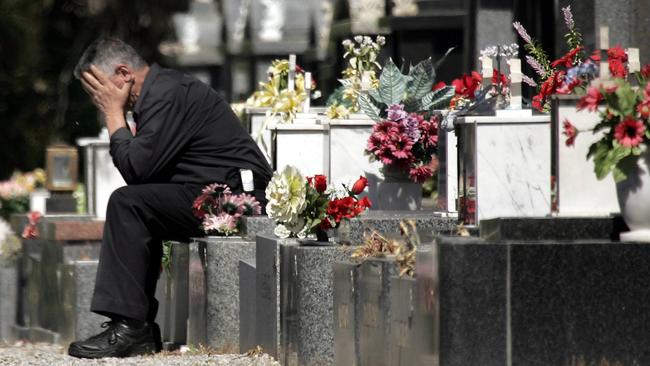
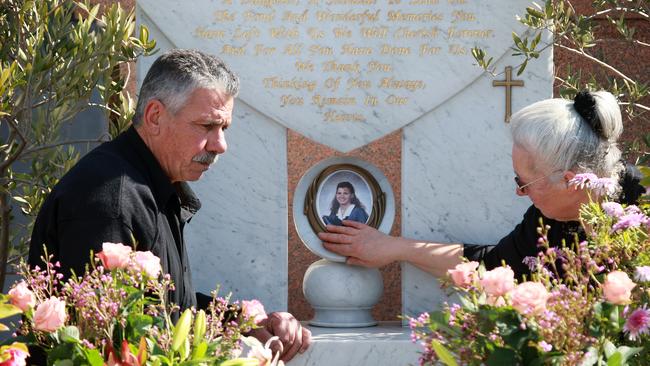
True to form, Dupas appealed against the Halvagis conviction — but failed.
Up until the Court of Appeal decision, the Halvagis family had waited 15 years for justice.
Outside court after the ruling against Dupas in December 2012, Mr Halvagis said: “This is the end. Me and my family have been through so much.’’
Ms Halvagis’s brother, Bill, said the family were thrilled with the result.
“(For the appeal) to be dismissed after 15 years, finally Mersina can lay to rest and we can get on with our lives and remember her ... and cherish the moments we had with her,’’ he said.
Up to $3 million was spent by Victorian Legal Aid, the Office of Public Prosecutions and the courts in 33 legal proceedings since Dupas was first charged with murder.
Andrew Fraser reportedly went on to receive part of a $1 million reward for his role as a key witness who helped secure a guilty verdict.
In July last year, detectives were granted five hours to quiz Dupas over the 1997 stabbing death of grandmother Kathleen Downes at her Brunswick nursing home.

Ms Downes was stabbed about 6.30am on December 31, almost two months after Ms Halvagis was murdered.
Det-Sgt Michael Daly told Melbourne Magistrates’ Court Dupas was a prime suspect, but had previously refused to comment.
Det-Sgt Daly said Dupas’s home phone was used to contact Ms Downes’ nursing home twice in November 1997.
The court heard another call was allegedly made on New Year’s Eve that year, just two hours before Ms Downes was stabbed to death.
Andrew Fraser is said to have told investigators Dupas indicated “they will never get me for that’’ in reference to the Downes murder.
Police have never given up hope of laying charges if and when enough evidence comes to light.


